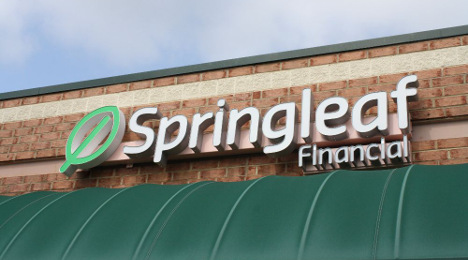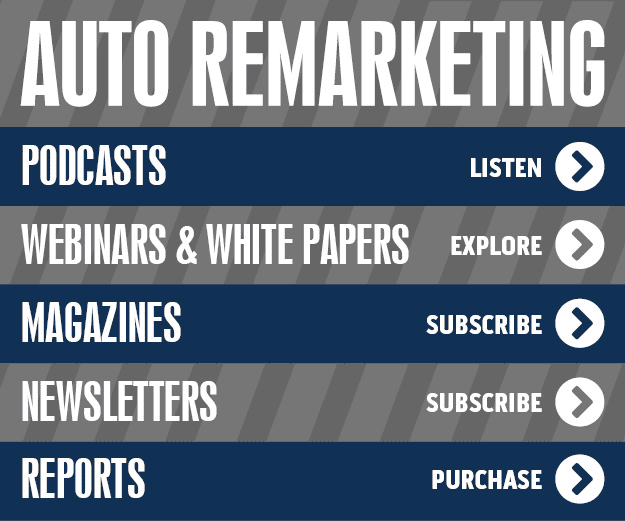A day after the latest auto loan default data showed only marginal movement, TransUnion reported on Wednesday that its information shows the national auto loan delinquency rate declined to its lowest level in two years.
TransUnion’s auto delinquency rate — the ratio of borrowers 60 days or more delinquent on their vehicle installment contracts — dropped to 0.95 percent in the second quarter, down 3.1 percent from 0.98 percent a year earlier.
Analayts mentioned that auto delinquency rates now are at the lowest level since Q2 2013, when delinquency rates dropped to 0.86 percent.
While the overall reading is showing a positive trend, TransUnion carved out an analysis in the subprime space, too, and found similar delinquency behavior unfolding.
Delinquency rates for subprime borrowers — those consumers with a VantageScore 3.0 credit score lower than 601 — continued their steady decline, settling at 4.98 percent in Q2. The reading marked a 1.6-percent year-over-year decline from 5.09 percent in Q2 of last year.
On a quarterly basis, delinquency rates for subprime consumers declined 4 percent from 5.19 percent in Q1 of this year.
TransUnion found that nearly 72.5 million consumers have an auto loan or lease as of Q2 with nearly one-fifth (18 percent) of those consumers in the subprime risk tier.
Despite the 13.1 million subprime consumers with auto loans, subprime participation remains below the 23.7 percent level observed in Q3 2009 coming out of the Great Recession.
“Lenders are being prudent about re-entering the subprime lending market, and consumers are effectively managing their loans as delinquency rates remain stable,” said Jason Laky, senior vice president and automotive business leader for TransUnion.
“In today’s lending environment, we’re seeing consumers across all risk tiers take advantage of low rates. Super prime consumers, typically a group with greater wherewithal to purchase their cars for cash, are also financing their cars with more frequency,” Laky said.
Of the 72.5 million consumers with an auto loan or lease, TransUnion determined 16.8 million belong to the super prime risk tier — those consumers with a VantageScore 3.0 credit score 780 or higher. More than 23.3 percent of all auto loans are held by super prime consumers, an 8.2-percent year-over-year increase from Q2 of last year.
Viewed one quarter in arrears (to ensure the large majority of accounts are reported and included in the data), TransUnion discovered new auto loan originations increased 4.3 percent year-over-year to 6.5 million in Q1, up from 6.2 million in Q1 of 2014.
On a quarterly basis, auto originations increased 5.3 percent from 6.1 million in Q4 of 2014.
Analysts noticed auto loan debt per borrower grew 3.4 percent to $17,696 in Q2 2015. They pointed out the growth moderated across all risk tiers on a year-over-year basis, with the slowest pace of growth since Q2 2012.
“While growth rates have slowed progressively throughout the past two years, we are still in a high growth period,” Laky said. “Demand for auto loans was pent up during the Recession, and we’re seeing a return to a normal momentum.”
The youngest consumer group — individuals age 30 and younger — experienced growth in average balance for open auto trades in Q2. Up from $14,778 in Q2 of 2014, TransUnion indicated the average balance was $15,200 in Q2 of this year, an increase of $423.
Analysts went on to mention nearly 831,000 more young consumers had an auto loan in Q2 of this year than in Q2 of last year. Despite this increase, TransUnion pointed out delinquency rates remained stable from Q2 2014 (1.27 percent) to Q2 2015 (1.28 percent).
Looking at the data geographically, TransUnion noticed only two of the nation’s largest cities experienced an increase in auto loan delinquency in Q2. Houston (up 5.4 percent from 1.11 percent in Q2 2014 to 1.17 percent in Q2 2015) and Washington D.C. (up 5.1 percent from 0.79 percent in Q2 2014 to 0.83 percent in Q2 2015) experienced rises, while Boston remained unchanged at 0.59 percent for both Q2 2014 and Q2 2015.
On a state level, TransUnion reported delinquency rates in 33 states declined in Q2. Oklahoma (down 17.2 percent from 1.66 percent in Q2 2014 to 1.37 percent in Q2 2015) and Illinois (down 11.9 percent from 1.01 percent in Q2 2014 to 0.89 percent in Q2 2015) experienced double-digit declines in their year-over-year delinquency.
Analyts added that all states had an increase in auto loan debt per borrower in Q2, with New Mexico (up 5.9 percent from $20,387 in Q2 2014 to $21,586 in Q2 2015) and Georgia (up 5.2 percent from $18,312 in Q2 2014 to $19,258 in Q2 2015) experiencing the largest rises.
“The auto loan market continues to be fueled by new account growth, higher balances financed and low delinquency rates,” Laky said. “We’re observing low delinquency rates in major U.S. cities and many states, indicating a positive lending environment.”
This information is reported by TransUnion and is part of its ongoing series of quarterly analyses of credit-active U.S. consumers and how they are managing credit related to mortgages, credit cards and auto loans.
EFG Companies and Northwood University are collaborating again, this time for an F&I competition designed to “jolt” the industry into a higher standard of innovation.
A new accolade to be held annually, officials highlighted the F&I Innovator of the Year program will pit six teams of Northwood’s junior and senior undergraduate automotive marketing and management students against one another to conceptualize and build a new F&I product while earning course credit.
A panel of dealer principals, EFG executives and Northwood’s automotive program educators will judge each team’s business case in November. EFG Companies will award the winning team $25,000, and will develop the winning F&I product for the retail automotive marketplace.
The company will also return a percentage of the product’s revenues to Northwood University.
Officials explained the competing teams will be tasked with developing a business case for their new F&I product. Each team will be assigned an F&I director as a mentor to act as a sounding board and guide for one hour per week. The students must research, rationalize and demonstrate the market viability of the new product, and it’s potential to facilitate F&I product sales in franchise dealerships.
In addition, the teams will keep video diaries of their progress, challenges, breakthrough and more that will be uploaded to YouTube each week like the update available at this top of this page. The competition will run from Sept. 7 through Nov. 13.
“Since the 1980s, F&I products have been developed from a dealer/F&I perspective outward, versus a consumer perspective inward,” EFG Companies president and chief executive officer John Pappanastos said. “The increasing compliance and customer retention pressure, and the challenge of appealing to a new and highly informed generation, have predicated the need for the industry to turn innovation on its head.
“These students represent a fourth of the U.S. population with $200 billion in annual buying power. Our hope is that other F&I providers will follow suit in finding new ways to innovate and drive value for dealers,” Pappanastos continued.
Organizers added the F&I Innovator of the Year competition will provide Northwood junior and senior students with a deeper understanding of F&I’s importance for dealer profit and customer satisfaction.
Jennifer Rappaport, who is chief marketing officer and president marketing services at EFG Companies, told SubPrime Auto Finance News during a phone conversation on Wednesday that program orchestrators are being careful “not to lead the witness” in terms of expectations from what kinds of ideas might be generated by the participating Northwood students.
“For all of us to think that F&I products will only be sold in an F&I office during the next 30 years is probably not an accurate statement,” Rappaport said. “What are the other areas within a dealership where a consumer protection product that has been traditionally been sold in tradition F&I offices? They may come up with a pure F&I office product. They may come up with something very different. They also might come up with a more showroom traffic-driving product.
“We’re just excited to see what they come up with and we’re not putting a lot of handcuffs on them because we really want them with fresh, objective non-jaded minds to think about this from a pure consumer experience and from what consumers find both relevant and valuable,” she continued.
Currently, EFG Companies estimated dealers generate 35 to 40 percent of their profit from the sale of F&I products. EFG added the pace of change in this area of dealership profitability is evolving rapidly due to continuing pressure on finance companies, and consequently, on the dealer’s finance reserve from the Consumer Financial Protection Bureau.
“This competition exemplifies the Northwood University philosophy of hands-on learning. It provides our students the unique opportunity to see first-hand how entrepreneurism and leadership can impact the industry as a whole,” Northwood University president Keith Pretty said.
“Through this competition, we are providing students with an up close and personal opportunity to assess the challenges facing dealerships today and create a product or solution that has never been done before, and can viably drive profit margin for a dealer,” Pretty added.
This project isn’t the first time EFG Companies and Northwood are working together. This spring, EFG taught Northwood’s inaugural reinsurance class at the university’s Michigan campus. The class included a two-part curriculum took students from the most basic definitions of traditional insurance (such as premium, commission, reserve and more) to an overview of reinsurable F&I products like service contracts.
“We started working with Northwood over a year ago, and we’ve just been incredibly impressed with that organization,” Pappanastos told SubPrime Auto Finance News. “Not only is it really the only accredited auto retail marketing management curriculum, but they have a class of students who really care about this industry. They teach a very entrepreneurial model. The more we’ve gotten close to Northwood the more impressed we’ve been. This is our opportunity to leverage some of the thinking of millennials that they turning out who will be the leaders of this industry in the future.”
Perhaps another component of why credit unions are so aggressive in expanding their auto portfolios is their collective relationship with dealerships is as good as it’s ever been. That’s the sentiment conveyed by CU Direct executive vice president Jerry Neemann when SubPrime Auto Finance News connected with him shortly after TransUnion released its annual survey of credit union executives, who expressed their optimism about auto originations and performance.
Neemann based his assessment on the steady improvement during the past 20 years of CUDL, the network that now includes close to 12,000 dealerships that work with 1,100 credit unions.
“What’s happened during that time is we’ve gone through a lot of evolutions. The dealership business model has adapted, and the credit union model is a very valuable partner for dealers,” Neemann said. “It gives them excellent locations to go to get paper bought. It opens more channels of comparative lending to find a home for the loan.
“The additional benefit value that’s been worked on during this time is truly credit unions are a membership-based organization,” he continued about the institutions currently leveraging CUDL that now have about 45 million consumer members.
Neemann explained the relationship between dealerships and credit unions function because it’s a “push-and-a-pull type of environment.” Not only are F&I managers sending applications to credit unions, but buying-assistance programs utilized by the institutions are also sending leads to the showroom.
“The business model and relationships that have been created are creating that kind of volume and value for both parties,” Neemann said.
Experian Automotive reported that credit unions held 16.94 percent of the auto finance market after the first quarter, representing a 7.6-percent rise year-over-year.
The TransUnion survey indicated just how much credit unions want to expand their auto portfolios. TransUnion’s survey revealed that auto loans rank at the top of the list for credit union executives in terms of loan growth, focus and opportunity during the next 12 months. Auto loans were ranked No. 1 by 48 percent of credit union executives and in the top 3 (of 12 credit categories) by 81 percent of respondents.
“Auto lending is one of the cores of what they do,” Neemann said. “As they build up a book of business, it’s continuing to grow. You always have run-off of your earlier loans. There’s always a need to continue originating to grow and replace your portfolio that’s running off. They’re highly motivated and strong in the market. I see our growth continuing. We will be a strong player.
“Members aren’t going anyway. As part of that equation, they’re always buying cars. The credit unions are there to lend their money to the members. Both pieces are working on an ongoing basis,” he went on to say.
Neemann acknowledged it’s not quite an “apples-to-apples comparison,” but he calculated that if you added together the collection origination volume and outstanding portfolio of the credit unions involved with CUDL, the figure would only trail some of the largest single auto finance market holders such as Wells Fargo and Ally Financial.
To get that kind of volume, Neemann insisted that credit unions in the CUDL network perform with the efficiency of a single institution such as Wells Fargo or Ally, not 1,100 different organizations that might have varying underwriting criteria. CUDL streamlines some front-end and back-end elements so dealers can know immediately know if the deal has been purchased, some modifications need to be made or if the application has been declined.
That speed of response is what J.D. Power recently found as being paramount to dealers.
Neemann also mentioned the ability of CUDL’s processing solution, Smart Fund, which can allow managers to upload the entire deal jacket electronically. A credit union processor can perform quality control tasks to ensure all document are included, alert the dealership if anything is missing and complete the funding process so money is in the store account usually in about 24 hours.
“Funding for the dealer as we all know is very critical. That’s about as efficient as it can get,” Neeman said.
Exeter Finance Corp. appointed a former Capital One executive to the post of executive vice president, analytics and marketing.
Taking on this role effective on Monday was Brian Donohue, who Exeter highlighted as an accomplished financial services executive with broad strategic, analytical decisioning and operational management experience.
Donohue most recently served as vice president of servicing, subservicing and integration operations for Capital One Home Loans, where he led customer operations, default operations, subservicing operations and the integration of multiple servicing platforms for a $50 billion mortgage and home equity portfolio.
Donohue also led Capital One’s retail bank collection and recoveries operations.
Prior to that juncture, Donohue held leadership positions within dealer subprime at Capital One Auto Finance, as well as the marketing and analysis department for Capital One Credit Card.
“Brian is a results‐driven, visionary leader with extensive experience leading cross‐functional operational groups and building high‐performing teams. His analytical skills, combined with his ability to develop and execute business strategies, make him a welcome addition to the Exeter team,” Exeter chief executive officer Tom Anderson said
Prior to his experience at Capital One, Donohue served as a lieutenant in the U.S. Navy for more than seven years.
“Exeter is growing and evolving at a rapid pace, and establishing a reputation for being the best in the industry,” Donohue said. “I look forward to contributing to the growth and success of this dynamic company.”
TransUnion’s data shows credit union auto loan origination volume grew at a rate more than double the pace of the entire industry. Findings from a survey of 90 credit union executives TransUnion released this week also highlighted these institutions’ appetite for auto paper certainly isn’t waning; it's perhaps even becoming greater.
TransUnion’s survey revealed that auto loans rank at the top of the list for credit union executives in terms of loan growth, focus and opportunity during the next 12 months. Auto loans were ranked No. 1 by 48 percent of credit union executives and in the top 3 (of 12 credit categories) by 81 percent of respondents.
“Auto loans have proven to be one of the key growth opportunities for credit union executives in the past and should continue to do so in the future,” said Nidhi Verma, director of research and consulting in TransUnion’s financial services business unit.
“Auto loans are especially appealing because of the high demand for both new and used vehicles, as well as continued low delinquency rates,” Verma continued.
When Verma compared the survey results with the origination data TransUnion has available, she told SubPrime Auto Finance News that “clearly the messages are pretty tied together.”
From the first quarter of last year to the first quarter of this year, TransUnion reported a 7.4-percent increase in new auto loans issued by credit unions, while the rest of the industry saw a 2.1-percent increase in the same timeframe.
Verma also pointed out that subprime constituted 12.5 percent of all new loan originations in Q1 2015 for credit unions. This was similar to the 13.1 percent subprime share of originations in Q1 2014.
“There’s been a lot of conversation in the industry about subprime originations,” said Verma, who made a presentation in Las Vegas this week during a seminar TransUnion hosted for the credit union industry.
“Credit unions continue to be relatively conservative compared to the rest of the industry with approximately half the size of the subprime auto lending market,” she continued.
“Credit union delinquency rates are half the rate of the rest of the industry, which is a reflection of how credit unions manage risk distribution in this market,” Verman went on to say. “That’s one of the core differences that’s helping their delinquency rates.”
TransUnion also found that the duration of vehicle installment contracts credit unions are booking is lengthening.
In Q1 2010, 32 percent of credit union auto loans were originated with duration of more than 60 months. By Q1 2015, that percentage had risen to 47 percent.
TransUnion noted approximately 39 percent of survey respondents said that more than half of their auto loan originations are 60 months or greater in length.
“These data points clearly show that greater loan lengths are one of the drivers of growth in the auto market,” Verma said.
“In the current low interest rate environment, longer loan durations allow consumers to buy new or used cars with lower monthly payments that fit within their budget,” she went on to say. “The increase in loan durations shows lenders are meeting those consumer needs.”
After sharing the data and survey results, Verma explained that credit union executives should be in a better place to make decisions.
“If I’m a credit union and I’m developing a strategy for my auto business, you’re forming your strategy at one point in the year so you know where the capital investment is going on for the next 12 months,” Verma said. “We like to tie our survey and data into that strategic investment philosophy.”
Editor’s note: Watch for a future report in SubPrime News Update where CU Direct executive vice president Jerry Neemann offers his assessment of how credit unions and dealerships are working together more than ever to improve sales and originations.
Vehicle service contract provider AUL Corp. recently launched an upgrade to its Web system for its agents, dealers and repair facilities — an E-Claims portal.
Through the AUL website, repair facilities can access E-Claims and submit claims quickly and easily 24/7. During AUL business hours, officials indicated claims are routed directly into a queue for rapid response from claims adjusters.
Through AUL's new E-Claims system, the company highlighted repair centers will have complete visibility into the status of their claim as well as when claims are paid.
“We surveyed our dealers and agents to incorporate their ideas into this initiative,” AUL claims manager Frank Pfister said. “One key word for the service adviser is flexibility, and this allows the adviser to enter claims while being free for greeting and assisting customers in the service drive as needed."
AUL stressed that it has made several investments in technology and is implementing E-Claims as part of a series of enhancements for their dealers and agents.
Along with E-Claims, AUL is installing a new phone system to increase efficiency and improve call quality. AUL pointed out that it remains one of the few companies that eschew a phone tree and have a live person answering each call to provide personalized and friendly service to customers.
“Ease of use and flexibility for the user were at the top of our goals and dealers who have tested the program have been very pleased,” AUL chief information officer Suman Nair said. "It enhances our web presence and integrates with all of our other platforms creating a seamless solution.”
For more details, go to www.aulcorp.com.
The fastest growing auto loan balances in nearly a decade and record loan dollar volumes? Check.
The lowest second-quarter 30-day delinquency rate in five years? Check.
Strong auto sales? Check.
Oh, and there’s balanced portfolio distribution amongst the credit tiers.
“The automotive loan market is working the way it’s supposed to, with loans being made, vehicles purchased and payments made on time,” said Melinda Zabritski, Experian’s senior director of automotive finance.
“The automotive loan market is gaining momentum while maintaining remarkable stability,” Zabritski added. “It’s a good sign for the economy overall.”
Experian Automotive lays out those signs in its latest State of the Automotive Finance Market report released Wednesday.
At the top of Experian’s list: the second-quarter’s $92 million year-over-year growth in total dollar volume for outstanding car loan balances This represented the steepest climb in dollar volume since 2006, the company said.
Total loan balances were at $932 billion Q2, an all-time high, Experian said. A year ago, they were at $840 billion.
Meanwhile, the National Consumer Credit Trends Report from Equifax released Monday said the total outstanding balance on car loans and leases combined as of June was at $1.021 trillion, which beats the year-ago sum by 10.5 percent. It says there are 73.7 million outstanding accounts, which is up 8 percent.
“Strong sales numbers in both the new-car and used-car markets, coupled with the availability of quality financing for consumers are a few of the main reasons the industry has reached the one trillion dollar mark," said Dennis Carlson, deputy chief economist at Equifax. “It clearly reflects that the improving economy has provided the impetus for consumers to replace their aging vehicles and begin to satisfy their pent-up auto demand.
Payments made on time
Looking at Experian's data, here’s another thing that make the current environment all the more impressive: the market has great stability these days when it comes to borrowers making payments.
In fact, the 30-day delinquency rate for the period was 2.32 percent, which was the best Q2 reading in five years, Experian said. A year ago, it was at 2.37 percent.
The 60-day level nudged up slightly, reaching 0.607 percent after coming in at 0.603 percent a year ago.
Not to mention, there appears to be a great deal of balance when it comes to the credit-tier distribution, Experian found.
Granted, the combined Q2 market share for subprime and deep-subprime loans climbed from 19.92 percent to 20.02 percent in the past year, but super prime’s share was up as well, growing from 20.68 percent to 20.99 percent.
“Overall, lenders are taking a balanced approach to their portfolios, with slight growth in subprime and deep subprime balanced by the uptick in loans to the super-prime risk tier,” Zabritski continued. “There really is nothing alarming about the growth seen in subprime loans, provided consumers continue to make timely payments.”
More on auto loan growth
Going back to Equifax’s data, the company said banks were seeing 10.1 percent growth in auto loan balances through June, with finance companies seeing similar patterns at 10.2-percent growth.
However, when it comes to the leasing segment, finance companies are way ahead; in fact, their leasing portfolios are seven times as big as those from the banks, Equifax found.
What’s more, the company notes that, “Finance companies are also growing originations faster than banks with 54.2 percent of all new auto accounts and 51.8 percent of dollar originations through April 2015 coming through finance companies.”
Offering additional context, Carlson noted: “The captive auto finance companies are supporting sales for the manufacturers, and dealers continue to work with independent auto finance companies to find the right loans for their customers, particularly in the non-prime space.
“This combination has led to finance companies growing slightly faster than the commercial bank segment.”
With finance companies evidently thirsty for any reliable data and analysis about millennials that’s available, Experian and the National Automobile Dealers Association both chimed in on the topic of consumers born after 1980.
Earlier this week, NADA chief economist Steven Szakaly offered a cautious assessment of how millennials are going to impact the market, especially since he projected new-vehicle sales could reach an all-time high of 17.46 million units in 2016.
Szakaly explained that in part millennials “could present challenges to long-term growth in auto retailing.” The factor prompted him to note that after the industry potentially posts a record new-vehicle sales mark next year, the retailing of new models might soften back to 16.65 million units in 2017.
The NADA expert offered his assessment of millennials and made these predictions at the Center for Automotive Research's Management Briefing Seminars earlier this week in Traverse City, Mich.
“It will take four Millennials to replace the spending power of one Baby Boomer in the automotive retailing marketplace,” Szakaly said. “There’s also a wage gap between baby boomers and millennials, and stagnating wages for millennials, along with increasing vehicle-transaction prices, will pose challenges in the long run.”
Not long before Szakaly shared his perspective, Experian released key findings from a recent study meant to provide a glimpse into the credit management habits of millennials and show how coming of age in a challenging economy has had an effect on this generation’s credit profile.
Experian’s study showed that millennials appear to favor vehicle loans over leases, as there were 13.4 auto loans per one lease in the bureau’s analysis. Experian indicated this ratio is 9.3 to 1 for Generation X — individuals ages 35 to 49 — and 8.3 to 1 for baby boomers — consumers age 50 and older.
However, Experian also determined vehicle leases tend to be a product that may attract older consumers because they tend to have higher and more established credit. Consequently, Experian said its findings from the analysis showed that the older millennials were, the more likely they were to have a vehicle lease, rather than their younger counterparts.
That segment of Experian’s study slightly differed with a recent analysis generated by Edmunds.com, which reviewed registration data provided by Polk and determined that leasing has accounted for 28.9 percent of all new-vehicle purchases so far this year by millennials who range in age from 18 to 34.
Even with millennials taking a little longer to establish some forms of credit compared with previous generations, Experian insisted their sheer numbers make them an important and growing market segment. When comparing credit usage of a more youthful generation X population, Experian found that there appears to be some interesting trends in origination patterns.
Auto loans make up 14 percent of all recently opened accounts for millennials, compared to 1 percent for their generation X counterparts at the same age in 1998.
“We’re seeing that millennials are purchasing cars at a much earlier point in life, which is giving them the opportunity to build credit a little differently than previous generations,” said Rod Griffin, Experian's director of public education.
“This is a critical time for members of this generation as they are learning to use credit as a tool,” Griffin continued. “With so many financial education resources available to help them, we believe that members of this generation are more empowered and informed than members of other generations and are starting their adult lives off by building strong credit as they set out on their own.”
Similarly, Experian indicated student loans make up 24 percent of all new accounts for millennials, compared to 20 percent for their generation X counterparts at a comparable age.
Experian’s study also shows that fewer millennials are using bankcards, with only 27 percent of their recently opened accounts being bankcards, compared to 46 percent for their generation X counterparts at the same age.
“Given the significance millennials play in financial services and the credit marketplace, it is crucial to understand this influential consumer segment and how they use credit as a tool," said Michele Raneri, vice president of analytics and business development at Experian.
“While this generation may not look like they are on the right track financially, it’s important to keep in mind that credit scores are built on credit experiences, and while this generation has been slower to use credit, they have plenty of opportunities to build a positive credit history,” Raneri went on to say. “The best way to do that is to understand credit before using it.”
Springleaf Holdings acknowledged when the company reported its second-quarter financial performance on Thursday that its proposed acquisition of OneMain Financial that’s being put together in part to expand its subprime auto financing business won’t culminate until after Labor Day, at the earliest.
Officials said they have a timing agreement with the Department of Justice whereby Springleaf and OneMain agreed not to consummate the proposed acquisition prior to Sept. 10. Springleaf explained the agreement is in place in order to provide the DOJ with a “sufficient opportunity” to complete its review of the proposed acquisition from an antitrust perspective.
In addition, Springleaf noted that it also has been contacted by state attorney general's offices, which may seek to coordinate their antitrust review of the proposed acquisition with the DOJ.
The developments all stem from Springleaf announcing back on March 2 that it would acquire OneMain from Citigroup for $4.25 billion in an all-cash transaction. At closing, the combined company is expected to have 1,967 branches across 43 states.
But then 20 days later, DOJ notified Springleaf it would be reviewing the proposed acquisition from an antitrust perspective.
Furthermore on April 28, the DOJ also issued a civil investigative demand (CID) to both Springleaf and OneMain. The voluntary request for information and the CID sought documentary materials and information regarding the proposed acquisition and the marketplace in which both parties operate.
“We have responded to the DOJ's request,” Springleaf officials said.
Then on June 5, Springleaf, OneMain and the Department of Justice entered into the timing agreement.
“The review of the proposed acquisition of OneMain from an antitrust perspective has not yet been completed,” Springleaf officials said. “The DOJ and certain state attorneys general have expressed to Springleaf potential concerns with respect to the proposed acquisition.
“Springleaf expects to constructively engage with the DOJ and the states in an attempt to resolve any potential concerns,” they continued. “These discussions could result in a delay in the consummation of the proposed acquisition beyond the third quarter.”
When Springleaf hosted its quarterly conference call with investment analysts on Thursday, Springleaf president and chief executive officer Jay Levine addressed the latest acquisition development several times.
“We look forward to continuing to provide our views on the landscape for a highly fragmented and highly competitive industry and our goal remains to close as promptly as possible,” Levine said.
“Of course, we don’t control the regulatory review process or the timing or the results, and we plan to continue to work to achieve a constructive outcome here,” he continued according to a call transcript posted by SeekingAlpha.com.
Wall Street observers also wondered what’s drawing the interest from state-level officials.
“I can’t comment specifically on what any individual one is looking at, and I think their process continues to be ongoing,” Levine said. “So it’s difficult to know the exactly, but I’d say there is similar things what DOJ is looking at.”
Then analysts questioned whether the proposed acquisition will need to be modified to satisfy regulators.
“It’s premature to go there, around anything other than closing the deal,” Levine said. “What I’d say is what we’ve said in the very beginning that this is a large highly fragmented market. There is 100 million plus target customers combined.”
“We look forward to continuing to work with both the DOJ and the states to resolve whatever questions they have,” he added.
Along with taking their usual look at activity during the past three months, Federal Reserve officials also asked participants in the latest Senior Loan Officer Opinion Survey on Bank Lending Practices to examine trends going back 10 years.
Specifically, the Fed wanted a description of the current level of lending standards at banks relative to the range of standards that has prevailed between 2005 and the present. When it comes to subprime auto financing, the participants’ responses showed the banks that underwrite vehicle service contracts in this space indicated that standards on such loans remained tighter than the midpoints of the corresponding ranges since 2005 on net.
While the survey included more than 60 banks participate in prime auto financing, a total of 30 banks that responded to the survey delve into the subprime space.
A total of 11 banks said their subprime underwriting trends have been near the midpoint of the range that standards have been during this period. Seven banks indicated they have been somewhat tighter than the midpoint while six institutions noted they have been somewhat easier.
Another five banks said they have been either significantly tighter or near the tightest level that standards have been during this period as just one acknowledged it has been significantly easier.
Of the 30 banks that participate in subprime auto financing and responded to the Fed’s survey, the split was even between banks classified as large — which are generally defined as firms with annual sales of $50 million or more — and small firms — which are those with annual sales of less than $50 million.
Within the prime spectrum, the Fed found that 40 of the 61 banks told officials that their underwriting has been near the midpoint of the range that standards have been during this period. Another 12 firms said they have been somewhat easier while the remaining nine indicated they have been either somewhat or significantly tighter.
Looking at just the past three months, the Fed survey mentioned 45 out of 62 described demand for vehicle financing as “about the same” during that span.
As a result, the vast majorities of respondents told officials that several other factors have remained virtually unchanged during the past three months, including:
— Credit standards for approving applications
— Maximum maturity
— Spreads of loan rates over the bank’s cost of funds
— Minimum required down payment
— Minimum required credit score
— The extent to which financing is granted to some customers who do not meet credit scoring thresholds
The entire July survey can be downloaded here.












